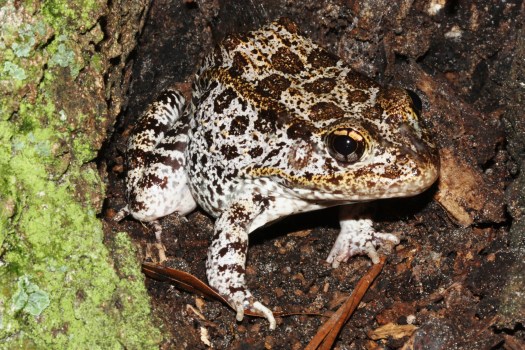
Puma concolor coryi evokes in the minds of most Floridians a mysterious big cat that charms us, even if we’ve never seen this charismatic megafauna in person. Their familiar shape, profile and significance can easily be brought to the forefront of our minds and yet there’s little need to be frightened of meeting a panther face to face on the CREW trails.
Try as you might – hit the CREW trails every day of the week and you’re still not guaranteed a panther sighting. That’s because this federally endangered species makes it a habit to avoid us. No offense, but they (like bears) can smell you a mile away and will take the path of least resistance away from you.
If you’re like many Floridians (new or native) and spend the majority of your time on the coasts or in urban centers, your chances of bumping into Florida’s state animal is on par with winning the jackpot. There are ways to increase your odds, but you’re going to have to invest. That’s because these big cats are not synanthropes, another ten-dollar word defined as animals that benefit from an association with humans and the somewhat artificial habitats that people create around them.
Why you probably won’t see a panther in the wild
Florida panthers avoid human interaction, unlike coyotes and racoons that fit the definition of synanthrope to a T. You’re more likely to see a bobcat, with their short tails and spotted adult coat of fur, or a roaming Florida black bear than ever to see the elusive “Coo-wah-chobee” – the Seminole word for “Big Cat” – the Florida panther.
Panthers in general live a secretive life, far from anthropocentric (human-centered) urban settings – they prefer their wide-ranging “pumacentric” world of dense understory vegetation in hardwood hammocks and pinelands and prairie grasslands where they can stalk and ambush prey, like white-tailed deer and wild boar.
That’s why the majority of panther sightings are made by cattle ranchers and farmers and why they must take additional precautions to prevent a panther’s prey instinct from negatively affecting their livestock.
The Florida Fish and Wildlife Conservation Commission (FWC) outlines many best practices that can be initiated to prevent unwanted interaction between wildlife and livestock. Other organizations like the Path of the Panther work directly with cattle ranchers, private landowners and government agencies to incentivize wildlife corridors.
Protecting what we can’t see
Many other species besides panthers benefit from preserving connected lands and utilize them to thrive. For instance, the Florida black bear, an omnivore that semi-hibernates, must forage over large forested areas to increase his or her bulk during the months leading up to our Florida winter, or dry season. Without these corridors allowing for their natural range of behavior, populations would suffer even greater losses.
Not to mention, Florida panthers are still rebounding under the protection of the Endangered Species Act. They were heavily hunted after 1832 when a bounty on panthers was created and the species was nearly extinct by the mid-1950s.
The current panther recovery plan works toward the goal of establishing 3 viable populations, maintained for a minimum of 12-years (2 panther generations), of at least 240 individuals each (excluding dependent-aged kittens). Many partnering agencies are working to ensure sufficient habitat to support these populations. For purposes of the Florida panther recovery plan, a viable population has been defined as one in which there is a 95% probability of persistence for 100 years.
This is where we come back to the beginning of the story. The survival of the Florida panther depends on the protection of a network of statewide public and private lands, like those at CREW. Partnerships with sportsmen/women, private landowners, wildlife biologists, land managers and you all play an important role in protecting land with future wildlife conservation in mind. Every effort to preserve land and water is one step closer to achieving a sustainable future for our beloved species.

How you can help
Drive slowly in panther country
Panther activity is greatest between dusk and dawn, so when driving in panther country, be mindful and alert. Slow down and increase your distance between other cars. This allows you time to react.
Report panther sightings and interactions
If you see a Florida panther and can collect evidence such as pictures of the animal or its tracks, please share the information with the Florida Fish and Wildlife Conservation Commission (FWC). Reporting your observations can help biologists address panther conservation needs by identifying the areas used by these large cats.
To report wildlife/human interaction contact the Florida Fish and Wildlife Conservation Commission’s (FWC) wildlife hotline: 1-888-404-FWCC (3922).
Aid injured and orphaned panthers
The Florida Panther Fund was established by The Wildlife Foundation of Florida to aid in the recovery of injured or orphaned Florida panthers, as well as to meet other panther conservation needs. The fund is an important resource that gives the Florida Fish and Wildlife Conservation Commission flexibility to deal with rare, unplanned, and non-budgeted events. Visit the Help Injured Panthers Return to the Wild website.
Support panther research
Florida panther research and management by FWC is funded almost entirely through the Florida Panther Research and Management Trust Fund. This fund receives its monies from the purchase and annual renewal of the Protect the Panther specialty license plate in Florida. Tag holders give an annual $25.00 donation to the fund when they renew their registration. Visit the Protect the Panther license plate website to learn more.





















































